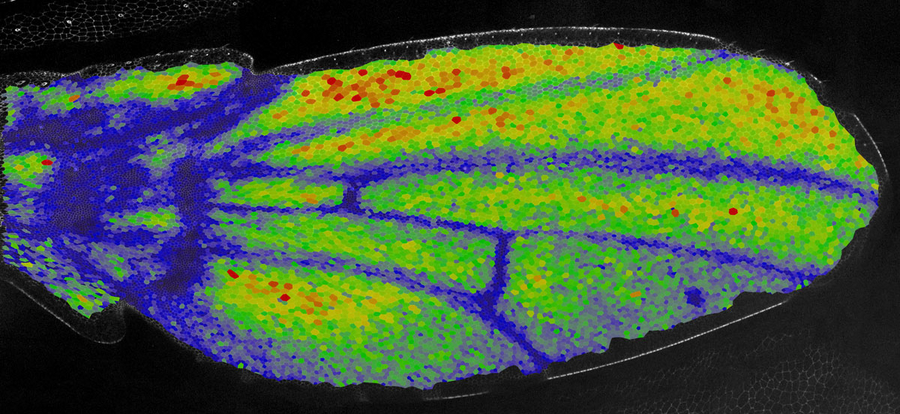
Copyright: Eaton / MPI-CBG
Epithelial tissues like our skin are made of cells that are tightly connected through E-Cadherin – a protein that binds adjacent cells together. These tissues respond differently to forces from the environment. When they are subjected to forces for a short duration they behave like an elastic band, whereas, when subjected to the same force for a longer duration they show viscous behavior like honey. This property of tissues, called viscoelasticity, plays a key role to understand tissue shape changes during embryonic development. Although viscoelasticity is a well-known property, the molecular mechanisms underlying such viscoelastic behavior of developing tissues were largely unknown, so far.
Researchers from Suzanne Eaton’s lab at the MPI-CBG, the neighboring Center for Systems Biology Dresden (CSBD), and the Biotechnology Center of the TU Dresden have now identified a key molecular driver governing this process. Together with Frank Jülicher from the CSBD, and the Max Planck Institute for the Physics of Complex Systems (MPI-PKS), the team studied the viscoelastic properties of the epithelial tissues in the Drosophila wing.
The scientists found that E-Cadherin is dynamically turned over between the cell membrane and the cytoplasm when tissues are subjected to mechanical forces. In their recent publication in Current Biology, the researchers reveal that this turnover is achieved by mechanically reducing the binding of an E-Cadherin associated protein called p120-Catenin. Removing the E-Cadherin binding protein from cell junctions speeds up the remodeling of the junctional network, and eventually decreases the cell’s viscoelasticity. The results of this study imply that the dynamic turnover of the E-Cadherin protein is responsible for the viscoelastic behavior of epithelial tissues.
Venkatesan K. Iyer, first author of the publication, says, “The findings in this study provide new perspectives to study developmental processes. Particularly, the in-vivo methods and approaches described in this work could be a starting point for exciting new research aiming at unravelling the interplay between tissue material properties and cell biological processes during embryonic development.”
K. V. Iyer, R. Piscitello-Gómez, J. Paijmans, F. Jülicher, S. Eaton.
Epithelial Viscoelasticity Is Regulated by Mechanosensitive E-cadherin Turnover.
Current Biology, 7 February, 2019